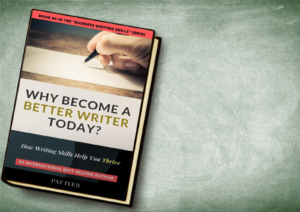If Your Company Uses Instruction Manuals for Its Products, You Must Read This.
Too many businesses don’t give enough attention to what may be their most important documents.
Entering Appliance Hell
I recently bought an appliance. (I’m not naming either the specific appliance or the company from which I bought it.)
Before buying it, I had already read the dreaded phrase, “Some assembly required.” You probably know this really means, “Abandon hope all ye who purchase this product.”
Unless you have an engineering degree or a very skilled friend, you are doomed. I took a deep breath and bought it anyway.
The appliance arrived on the day projected, which I considered a hopeful sign. Still, I opened the instruction manual with trepidation which proved to be well warranted.
Eighty percent of the manual consisted of colorful drawings that showed connected pieces but not precisely how they had arrived at this happy juncture. None of these pieces were numerically or alphabetically labeled or even named.
I had to figure out how the big squiggly piece connected to the narrow, sharp-edged one. The drawings did not reveal (nor did the text) that the assembler needed to press hidden bars.
Given this lack of identification, I realized with a fast-sinking heart that the manual wasn’t going to have the usual step-by-step guide, saying: “1. Attach Part A to Part B.”
I eventually had to go online and watch videos on YouTube to learn how to assemble the appliance. The videos, not made by the company, were moderately helpful. With some difficulty, I identified different parts and assembled the machine without shedding blood. (This has not always been the case.) However, I was greeted with deafening silence when I turned it on.
Then It Got Ugly
I turned to the laughably-named troubleshooting section. This was printed in approximately 8-point type.
Note that it was typeset in gray type.
As a senior citizen, I felt profoundly insulted. I have friends in my age group whose eyesight gives them much greater reading challenges than I experience.
Consider this: One reason for the popularity of electronic reading devices is that you can enlarge the type. However, I also believe that people considerably younger than me would have had trouble reading this manual.
The worst thing about the design was that the instruction manual had two BLANK pages. Any competent designer knows how to make the most of available space. Utilizing these two empty pages would have allowed the designer to enlarge the overall type size and produce a readable manual.
I finally got my appliance to work by hitting it. I’ve found this to be a proven method of repair.
Will I ever buy from this company again? No. I wrote a letter of complaint.

A Twofold Dilemma
In an instruction manual, you consider both the information and the design.
Before the text goes to a designer, ensure that it provides the necessary information in an accessible way. Don’t rely on only your evaluation. Test the clarity of the information by having a range of potential users apply it.
When it comes to the design element, I have a caveat. One of the worst results of desktop publishing was that too many people decided they were designers. They weren’t. They still aren’t.
It’s like designing a book cover. You can have the programs and fool around with typefaces and images, but do you have the technical expertise and artistic eye to know whether you’ve designed a compelling cover?
I don’t. I hire a professional. I recommend that you do, too. When you do, ask to see the instruction manuals they’ve designed. Make sure you like how they look and that they present the information usefully.
There seems to be an unwritten rule that the foldout instruction manual needs to be tiny. I cannot figure out why the Instruction manual or sheet cannot be as large as the package containing the Item. This will allow the purchaser to read the print without using a magnifying glass, enlarging the paper on a copier, or using a phone camera/
You can make this process easier by studying instruction manuals. If you have some familiarity with their design, you can confer more effectively with the designer you choose. Below, I provide two resources that show examples of manual design.
https://www.userfocus.co.uk/articles/usermanuals.html
https://www.pinterest.com/aangel84311/instruction-manual-design/
When you get the designed manual, go over it again. Make sure that the type is readable (without effort), that the illustrations illustrate, and that the overall presentation will help the end consumer to assemble and easily use the appliance.
Again, get other opinions about this.
If you follow all these steps, congratulations. You’ve done one of the most important things you can to encourage return business.
Pat Iyer, author of Why Become a Better Writer Today? How Writing Skills Help You Thrive, formerly owned a successful business that hired expert witnesses who wrote reports for lawyers. She knew that attorneys who saw language errors were concerned that carelessness with language could reflect equal carelessness with the facts—and a legal case may hinge on the facts.
Many employers share Pat’s knowledge that language skills, whether expressed in web site text, newsletters, blogs, reports, or advertising copy, represent their companies. Business is all about communication, and language skills are the building blocks of effective communication.
“But I can’t write,” you may say. Pat, as a writer and editor who has worked with many clients, knows that anyone can improve their writing. In Why Become a Better Writer Today? How Writing Skills Help You Thrive, she describes what it takes to become a competent writer.
- Passion for your subject,
- The ability and willingness to do research,
- The commitment to get the writing done,
- The willingness to learn grammatical skills,
- Patience with yourself and the process of writing.
This book guides you through some key areas where you can improve your skills. It takes up issues of a positive mindset, the importance of reading extensively, grammar, spelling, and punctuation.
Most of all, it will demonstrate, through many examples, how accurate writing can make a huge difference in your professional life. Order it at this link.
Pat Iyer spends more time peering at small instruction manuals than she cares to admit.

